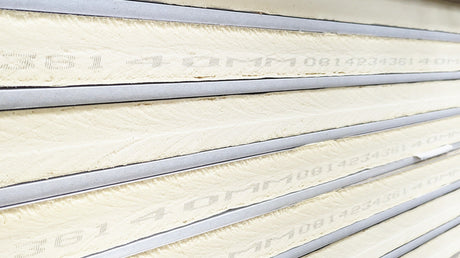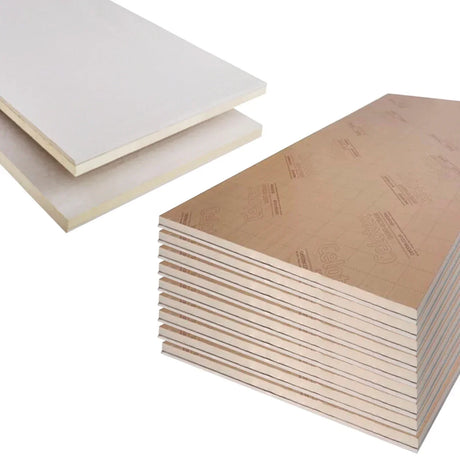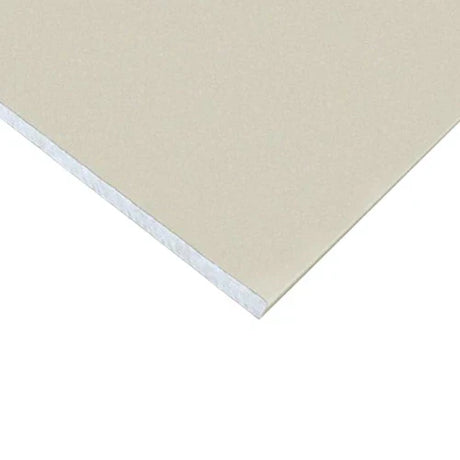A practical guide to choosing the right hardware for strong, long-lasting timber builds
The difference between a timber project that stands the test of time and one that fails prematurely often comes down to a single crucial factor: the quality and appropriateness of the fixings you choose. Whether you're crafting a weekend garden deck, constructing a robust shed frame, or installing elegant fencing panels, the hardware you select determines not just the structural integrity of your build, but also its longevity, safety, and overall professional finish.
At DIY Building Supplies, we've witnessed countless projects over the years – from ambitious trade installations across the UK to enthusiastic weekend builds in back gardens throughout Nottingham and beyond. The most successful projects invariably share one common characteristic: meticulous attention to selecting the right fixings for the specific application. This comprehensive guide draws from our extensive experience supplying both trade professionals and DIY enthusiasts to explain the essential fixings for timber projects, including battens, joist hangers, and specialised screws.
Understanding the nuances of timber fixings isn't just about technical specifications – it's about ensuring your investment of time, effort, and materials delivers the results you envision. The British climate presents unique challenges for outdoor timber construction, from driving rain in coastal areas to freeze-thaw cycles in more exposed locations. Choosing fixings that can withstand these conditions whilst maintaining their structural integrity requires knowledge that goes beyond basic DIY guides.
Timber Battens: The Foundation of Professional Framing
What Are Timber Battens and Why They Matter
Timber battens represent one of the most versatile and essential components in modern construction and renovation projects. These long, narrow strips of treated timber serve as the backbone for countless applications, from supporting plasterboard in interior renovations to creating the framework for external cladding systems. Understanding their role and proper application can transform a basic DIY project into a professional-grade installation that rivals the work of experienced tradespeople.
The evolution of batten construction has been significantly influenced by leading UK manufacturers such as Jewson, Travis Perkins, and Wickes, who have developed comprehensive ranges of pressure-treated and untreated options to meet diverse project requirements. Modern battens are precision-cut to ensure consistent dimensions, with tolerances that allow for accurate installation and predictable performance. The treatment processes used by these manufacturers comply with British Standards, ensuring longevity and resistance to the specific challenges posed by the UK's variable climate.
In contemporary construction, battens serve multiple critical functions beyond simple support. They create essential ventilation gaps behind cladding systems, preventing moisture accumulation that could lead to timber decay or structural damage. When used as substrates for roofing applications, they provide the secure fixing points necessary for tiles or other covering materials whilst maintaining the structural integrity required by building regulations. This multifaceted role makes understanding batten specifications and applications crucial for any serious timber project.
Key Applications and Strategic Uses
The strategic placement of timber battens can dramatically influence both the performance and longevity of your project. In cladding applications, battens create the crucial air gap that allows moisture to escape from behind the cladding material, preventing the accumulation of condensation that could compromise both the cladding and the underlying structure. This ventilation principle, well understood by manufacturers like Arnold Laver and James Latham, has become fundamental to modern external wall construction.
For roofing substrates, battens provide the essential fixing points for tiles whilst accommodating the thermal movement that occurs as temperatures fluctuate throughout the seasons. The spacing and sizing of these battens must be precisely calculated based on the specific tile or covering material being used, with manufacturers providing detailed specifications for each product. This attention to detail separates professional installations from amateur attempts and ensures compliance with building regulations and warranty requirements.
Fencing applications present their own unique requirements for batten usage. Here, battens often serve dual roles as both structural elements and aesthetic features. The pressure treatment levels required for ground contact differ significantly from those needed for above-ground applications, and understanding these distinctions is crucial for project success. Leading suppliers like Sydenhams and Covers Timber offer comprehensive technical support to help specify the appropriate treatment levels and batten grades for specific applications.
Professional Installation Techniques
Achieving professional results with timber battens requires attention to spacing, fixing methods, and material selection. The 400mm centre spacing commonly used for plasterboard support represents more than just industry convention – it reflects the structural requirements needed to prevent sagging and ensure long-term performance. This spacing accommodates the standard dimensions of plasterboard sheets whilst providing adequate support for both lightweight and heavy-duty applications.
The choice between annular ring shank nails and decking screws for batten fixing depends on several factors, including the loads involved, the likelihood of future dismantling, and the specific characteristics of the timber being fixed. Annular ring shank nails provide exceptional holding power and resist withdrawal, making them ideal for permanent installations where maximum grip is required. Conversely, decking screws offer the advantage of adjustability and removal without damage, making them preferable for applications where future modifications might be necessary.
Pressure treatment selection requires careful consideration of the intended application and exposure conditions. Osmose, Lonza, and Arch Timber Protection represent the leading treatment providers in the UK market, each offering different systems optimised for specific applications. Understanding the treatment classifications – from UC1 for internal use to UC4 for ground contact applications – ensures your battens will perform reliably throughout their intended service life.
Joist Hangers: Engineering Precision for Structural Connections
Understanding Joist Hanger Technology
Joist hangers represent a triumph of engineering precision in timber construction, transforming what was once a complex and time-consuming skew nailing process into a straightforward, reliable connection method. These metal brackets, manufactured to exacting standards by companies like Simpson Strong-Tie, MiTek, and Gang-Nail, provide engineered connections that offer superior load-bearing capacity compared to traditional fixing methods whilst significantly reducing installation time and skill requirements.
The science behind joist hanger design involves careful consideration of load distribution, material properties, and connection geometry. Modern hangers distribute loads across multiple fixing points, reducing stress concentrations that could lead to timber failure or connection loosening over time. The pressed steel construction used by leading manufacturers creates consistent wall thicknesses and precise hole positioning, ensuring reliable performance across different timber species and moisture conditions.
British manufacturing standards for joist hangers have evolved to address the specific requirements of UK construction practices and timber grades. The galvanising processes used by manufacturers like Catnic and Birtley provide long-term corrosion protection that accommodates the moisture levels commonly encountered in British construction. These protective coatings are designed to maintain their integrity throughout the typical service life of timber structures, preventing the premature failure that can occur when inferior fixings are exposed to moisture.
Application-Specific Hanger Selection
The selection of appropriate joist hangers requires understanding the specific demands of different construction applications. Face-fix hangers, designed to mount directly onto vertical supports, provide the strongest connection for applications where maximum load capacity is required. These hangers excel in deck construction, where they must support not only the dead load of the decking material but also significant live loads from furniture, people, and potentially snow accumulation during winter months.
Wrapover hangers offer a different solution for applications where installation speed and simplicity take precedence over ultimate load capacity. These hangers prove particularly valuable in garden structure construction, where the loads are generally lighter and the installation environment may not accommodate the precision required for face-fix alternatives. Manufacturers like Sabre Fixings and Timco have developed ranges specifically optimised for these applications, balancing strength with ease of installation.
Long leg hangers address the challenges presented by deep joists or irregular construction scenarios. These specialised hangers accommodate the dimensional variations that occur in real-world construction whilst maintaining the structural integrity required for safe operation. The extended leg design distributes loads over a larger area of the supporting timber, reducing stress concentrations and improving long-term reliability.
Installation Excellence and Professional Techniques
Achieving professional results with joist hangers demands attention to both the technical requirements and the practical aspects of installation. The pre-punched holes in quality hangers are precisely positioned to optimise load distribution and prevent splitting of the supporting timber. Using all available fixing holes isn't just recommended practice – it's essential for achieving the rated load capacity and ensuring the connection performs as engineered.
The choice between hanger nails and structural screws represents a critical decision that affects both immediate installation success and long-term performance. Hanger nails, specifically designed for this application, provide rapid installation and reliable holding power. However, structural screws offer advantages in terms of adjustability and resistance to withdrawal forces, making them preferable for applications where the connections may experience dynamic loading or where future modifications are anticipated.
Galvanised and stainless steel options each offer distinct advantages for exterior applications. Galvanised hangers provide excellent corrosion resistance at an economical price point, making them suitable for most UK outdoor applications. Stainless steel hangers, whilst more expensive, offer superior performance in aggressive environments such as coastal locations or areas with high pollution levels. Understanding these distinctions enables appropriate specification for specific project requirements and environmental conditions.
Screws & Fixings: Precision Engineering for Every Application
Decking Screws: Purpose-Built for Outdoor Excellence
The evolution of decking screws represents a sophisticated response to the unique challenges presented by outdoor timber construction in the British climate. These specialised fasteners, developed by manufacturers like Spax, Fischer, and Reisser, incorporate advanced coating technologies that provide long-term protection against the corrosive effects of moisture, temperature fluctuations, and chemical exposure from treated timber preservatives.
The self-countersinking design of quality decking screws eliminates the need for pre-drilling in most applications whilst ensuring a flush finish that won't snag clothing or create water traps. This design feature proves particularly valuable when working with composite decking materials, where the precise control of screw depth is crucial for both aesthetic and performance reasons. The thread design of these screws provides exceptional holding power in both treated and untreated timber, with the sharp points facilitating easy penetration whilst minimising splitting.
Coating technologies used on premium decking screws have evolved to address the specific challenges posed by different timber treatments and environmental conditions. Ruspert coatings, developed specifically for use with treated timber, provide enhanced corrosion resistance whilst maintaining the lubrication properties necessary for easy installation. These advanced coatings represent a significant improvement over traditional zinc plating, offering extended service life even in challenging coastal environments.
Wood Screws: Versatility for Internal Applications
Traditional wood screws continue to play a vital role in internal timber construction, where their proven performance and cost-effectiveness make them the preferred choice for a wide range of applications. The variety of materials and finishes available allows selection of screws optimised for specific applications, from furniture construction where appearance is paramount to structural framing where strength and reliability are the primary concerns.
Brass screws offer exceptional corrosion resistance and aesthetic appeal, making them ideal for applications where the fixings will be visible or where the project involves high-quality joinery work. The malleability of brass requires careful installation techniques to prevent head damage, but the superior appearance and longevity make this extra care worthwhile for premium applications. Nettlefolds and GWR Fasteners offer comprehensive ranges of brass screws in traditional and contemporary head styles.
Zinc-plated and stainless steel options provide different balances of performance and cost for internal applications. Zinc plating offers adequate corrosion protection for most internal environments at an economical price point, whilst stainless steel provides superior performance for applications where moisture exposure is likely or where maximum longevity is required. Understanding these distinctions enables appropriate specification for different areas of the same project.
Structural Screws: Heavy-Duty Performance
The development of structural screws has revolutionised heavy-duty timber construction, offering an alternative to traditional bolted connections that provides comparable strength with significantly improved installation convenience. These engineered fasteners, manufactured to exacting standards by companies like SFS Intec and Rothoblaas, undergo rigorous testing to ensure they meet the structural requirements specified in British Standards.
Coach screws represent the traditional approach to heavy-duty timber fixing, providing reliable performance for applications involving large section timbers and significant loads. The hex head design allows high installation torques whilst the coarse thread provides exceptional holding power in timber. Pre-drilling requirements and washer specifications must be carefully observed to achieve optimal performance and prevent timber damage during installation.
Modern structural screws offer several advantages over traditional coach screws, including reduced pre-drilling requirements, improved thread design for enhanced holding power, and specialized head configurations that facilitate installation in confined spaces. The self-tapping capabilities of these screws reduce installation time whilst providing connections that often exceed the strength of traditional alternatives.
Timber-to-Masonry Connections: Bridging Different Materials
Connecting timber to masonry represents one of the most challenging aspects of mixed-material construction, requiring fixings that can accommodate the different expansion characteristics and load-bearing capabilities of these dissimilar materials. Frame fixings, manufactured by companies like Hilti and Fischer, provide engineered solutions that address these challenges whilst ensuring reliable long-term performance.
Shield anchors offer an alternative approach for lighter-duty applications, providing reliable fixing in both brick and concrete substrates. The expansion mechanism of these anchors must be carefully matched to the substrate material and thickness to ensure optimal performance. Understanding the load ratings and installation requirements for different anchor types enables appropriate selection for specific applications.
The interface between timber and masonry requires careful consideration of moisture management, thermal movement, and differential settling. Quality fixings incorporate design features that accommodate these factors whilst maintaining structural integrity. Manufacturers provide detailed technical specifications and installation guidelines that must be followed to achieve the intended performance.
Additional Fixings & Accessories: Completing the Professional Package
Angle Brackets & Corner Plates: Reinforcing Critical Connections
The strategic use of angle brackets and corner plates can transform a basic timber frame into a robust, professional-grade structure capable of withstanding significant loads and environmental stresses. These reinforcement components, available from manufacturers like Simpson Strong-Tie and Catnic, provide additional load paths that distribute forces more effectively than timber-to-timber connections alone.
In pergola and shed construction, angle brackets serve multiple functions beyond simple reinforcement. They provide consistent joint geometry, ensuring square and plumb assembly whilst offering the ability to adjust for minor dimensional variations in the timber. The galvanised finish standard on quality brackets ensures long-term performance in outdoor applications, whilst the pre-punched hole patterns facilitate rapid installation with standard fixings.
Corner plates represent a refinement of the basic angle bracket concept, offering enhanced load distribution and improved aesthetic integration. These plates can be recessed into timber members to provide flush mounting whilst maintaining full structural capacity. The variety of sizes and configurations available allows selection of plates optimised for specific joint requirements and load conditions.
Timber Connectors: Advanced Load Distribution
Timber connector plates and straps represent sophisticated engineering solutions for applications where maximum strength and load distribution are required. These components, commonly used in roof truss construction and heavy-duty fencing applications, provide connections that often exceed the strength of the timber members themselves.
The pressed steel construction and precise hole patterns of quality connector plates ensure reliable load transfer whilst accommodating the natural movement of timber as it responds to moisture and temperature changes. Manufacturers like MiTek and Wolf Systems have developed comprehensive ranges of connector plates optimised for different applications and load requirements.
Restraint straps serve a specific role in preventing uplift and lateral movement in timber structures. These components prove particularly valuable in exposed locations where wind loading can create significant forces that standard fixings might not accommodate. The specification and installation of restraint straps requires careful consideration of load paths and connection details to ensure effective performance.
Washers & Nuts: The Critical Details
The importance of appropriate washers and nuts in timber construction is often underestimated, yet these components play crucial roles in ensuring connection integrity and preventing premature failure. Quality washers distribute loads over larger areas of timber, preventing the embedment that can occur when bolt heads or nuts bear directly on the wood surface.
The material selection for washers and nuts must consider the corrosive environment they will encounter, particularly in outdoor applications where moisture and temperature cycling create challenging conditions. Stainless steel and galvanised options each offer distinct advantages, with stainless steel providing superior corrosion resistance and galvanised components offering excellent performance at a more economical price point.
Over-driving prevention represents a critical consideration when working with softwood timbers, where excessive torque can cause permanent compression and reduce connection effectiveness. Understanding the appropriate torque levels and using suitable washers helps ensure connections achieve their intended strength whilst maintaining long-term reliability.
Choosing the Right Fixing for Your Project: Professional Decision-Making
Load-Bearing Analysis: Understanding Structural Requirements
The foundation of any successful timber fixing specification lies in accurately assessing the loads your project must accommodate. This analysis goes beyond simple weight calculations to consider dynamic loading, environmental factors, and safety margins that ensure reliable long-term performance. At DIY Building Supplies, we regularly assist customers in understanding these requirements, drawing from our extensive experience with projects ranging from simple garden structures to complex commercial installations.
Structural applications demand fixings that can accommodate not only the immediate loads but also the cumulative effects of repeated loading cycles and environmental exposure. Dead loads, represented by the permanent weight of materials, combine with live loads from occupancy and environmental factors to create the total loading scenario your fixings must address. Understanding these distinctions enables appropriate selection of fixings with adequate capacity whilst avoiding over-specification that increases costs unnecessarily.
Safety factors built into fixing specifications provide essential protection against the unexpected loads and material variations that occur in real-world applications. British Standards incorporate these factors into their recommendations, but understanding their basis helps inform decisions about when standard specifications are adequate and when enhanced fixings might be appropriate for specific circumstances.
Environmental Specification: Matching Fixings to Conditions
The British climate presents unique challenges that demand careful consideration when specifying fixings for outdoor applications. Coastal environments introduce salt spray that can accelerate corrosion, whilst urban locations present pollution-related challenges that differ from rural settings. Understanding these environmental factors enables selection of appropriate protection levels that ensure longevity without unnecessary expense.
Indoor versus outdoor applications require different approaches to corrosion protection and material selection. Internal fixings can often utilise more economical finishes whilst still providing adequate service life, whereas outdoor applications demand enhanced protection that justifies the additional cost through extended performance. The transition zones around windows, doors, and other openings present particular challenges where external-grade fixings may be appropriate even in nominally internal locations.
Timber treatment compatibility represents another crucial consideration, as certain preservative chemicals can accelerate corrosion of standard fixings. Understanding these interactions enables selection of appropriate fixing materials and coatings that maintain their integrity when used with treated timber. Manufacturers like Osmose and Arch Timber Protection provide specific guidance on fixing compatibility with their treatment systems.
Project-Specific Considerations: Tailoring Solutions
Different project types present unique requirements that demand tailored fixing solutions. Decking applications must accommodate significant live loads whilst providing drainage and maintenance access, requiring fixings that can be removed and reinstalled without damage. The seasonal loading cycles experienced by outdoor structures also demand fixings that can accommodate repeated expansion and contraction without loosening.
Roofing applications present perhaps the most demanding requirements for fixing selection, where failure can have serious consequences for both structural integrity and weather protection. The combination of wind uplift forces, thermal cycling, and moisture exposure creates conditions that only the most appropriate fixings can reliably withstand. Understanding manufacturer specifications and warranty requirements helps ensure compliance whilst optimising performance.
Fencing applications require fixings that can accommodate the dynamic loading created by wind pressure whilst resisting the moisture and ground contact conditions that accelerate deterioration. The variety of fencing styles and materials available creates numerous opportunities for optimisation through appropriate fixing selection, balancing initial cost with long-term performance requirements.
Professional Success Through Proper Specification
The distinction between amateur and professional results in timber construction often comes down to the attention paid to fixing selection and installation. At DIY Building Supplies, we've built our reputation on providing not just quality materials but also the technical expertise necessary to ensure optimal results for every project we support.
Using the right fixings and hardware represents an investment in the longevity, safety, and aesthetic success of your timber build. From engineered joist hangers that provide superior structural connections to specialised decking screws that resist the corrosive effects of outdoor exposure, each component plays a crucial role in the overall performance of your project. The modest additional cost of premium fixings represents exceptional value when considered against the potential consequences of premature failure or the expense of remedial work.
Whether you're a seasoned trade professional seeking to optimise your specifications or a weekend DIY enthusiast embarking on your first major timber project, investing in appropriate materials and expert guidance ensures results that reflect your skill and effort. The comprehensive range of fixings and technical support available through DIY Building Supplies provides the foundation for projects that stand the test of time whilst delivering the performance and appearance you envision.
Ready to Start Your Next Timber Project?
Explore our comprehensive collection of battens, joist hangers, decking screws, and specialist brackets at DIYBuildingSupplies.co.uk. Our experienced team in Nottingham is ready to provide the technical guidance and quality materials that ensure your project achieves professional results. From initial specification through to delivery across mainland UK, we're committed to supporting your success with expert advice, competitive pricing, and the reliable service that has made us the trusted choice for builders throughout Britain.
Visit our Fixings & Accessories collection today and discover how the right hardware can transform your timber project from good to exceptional.









